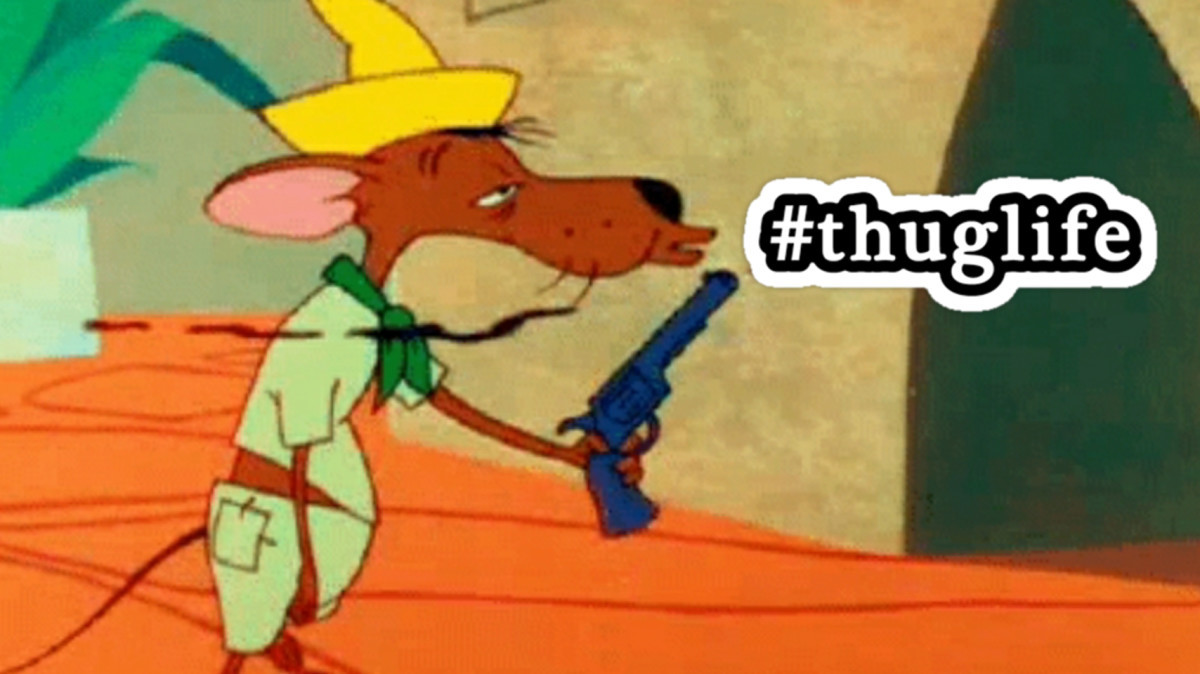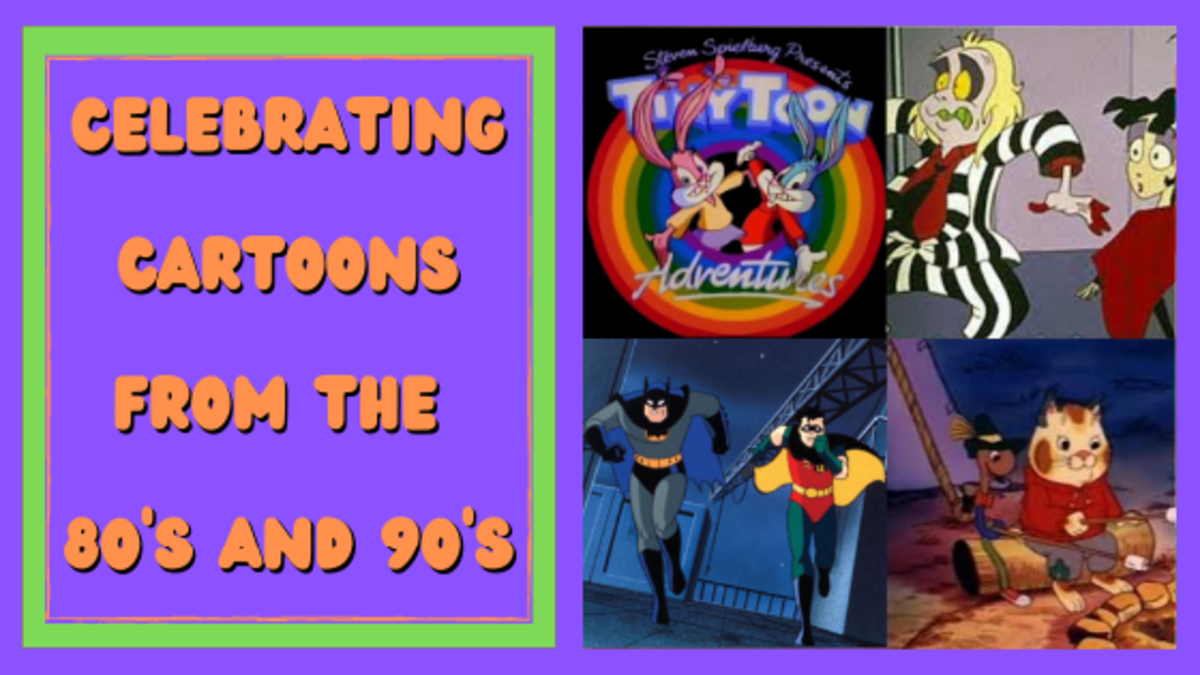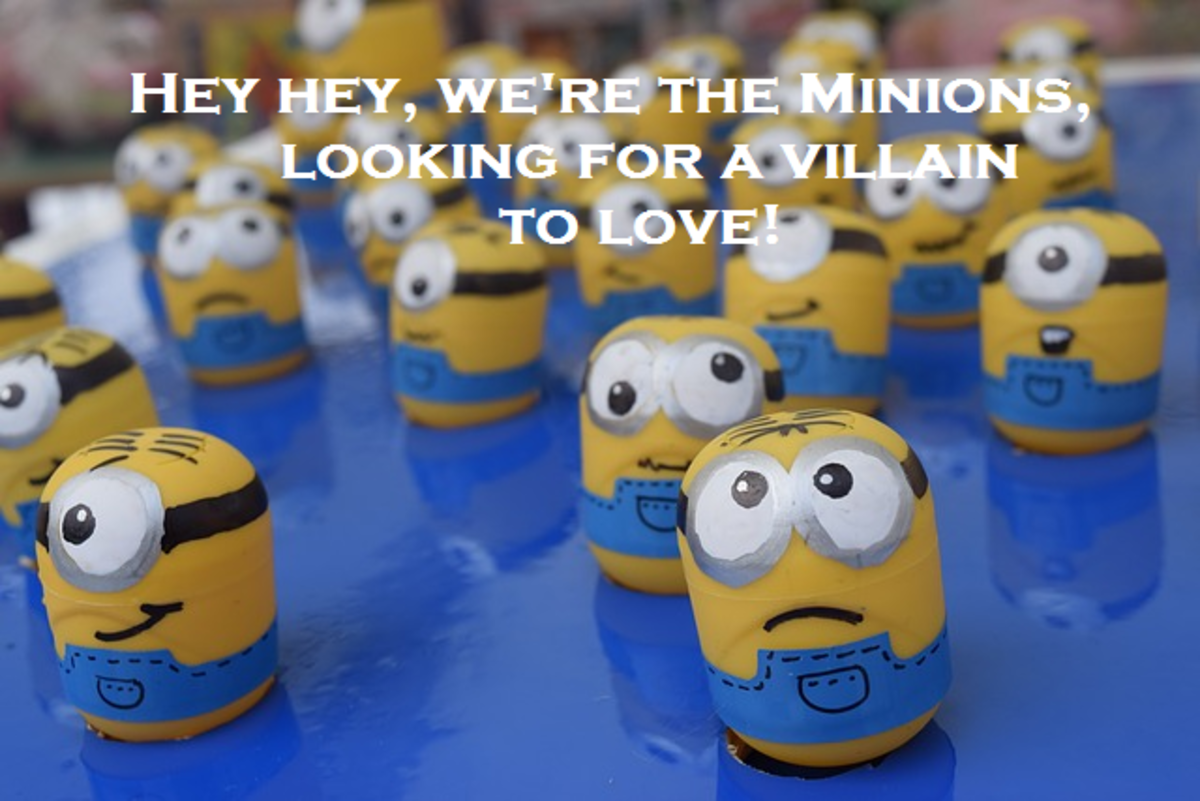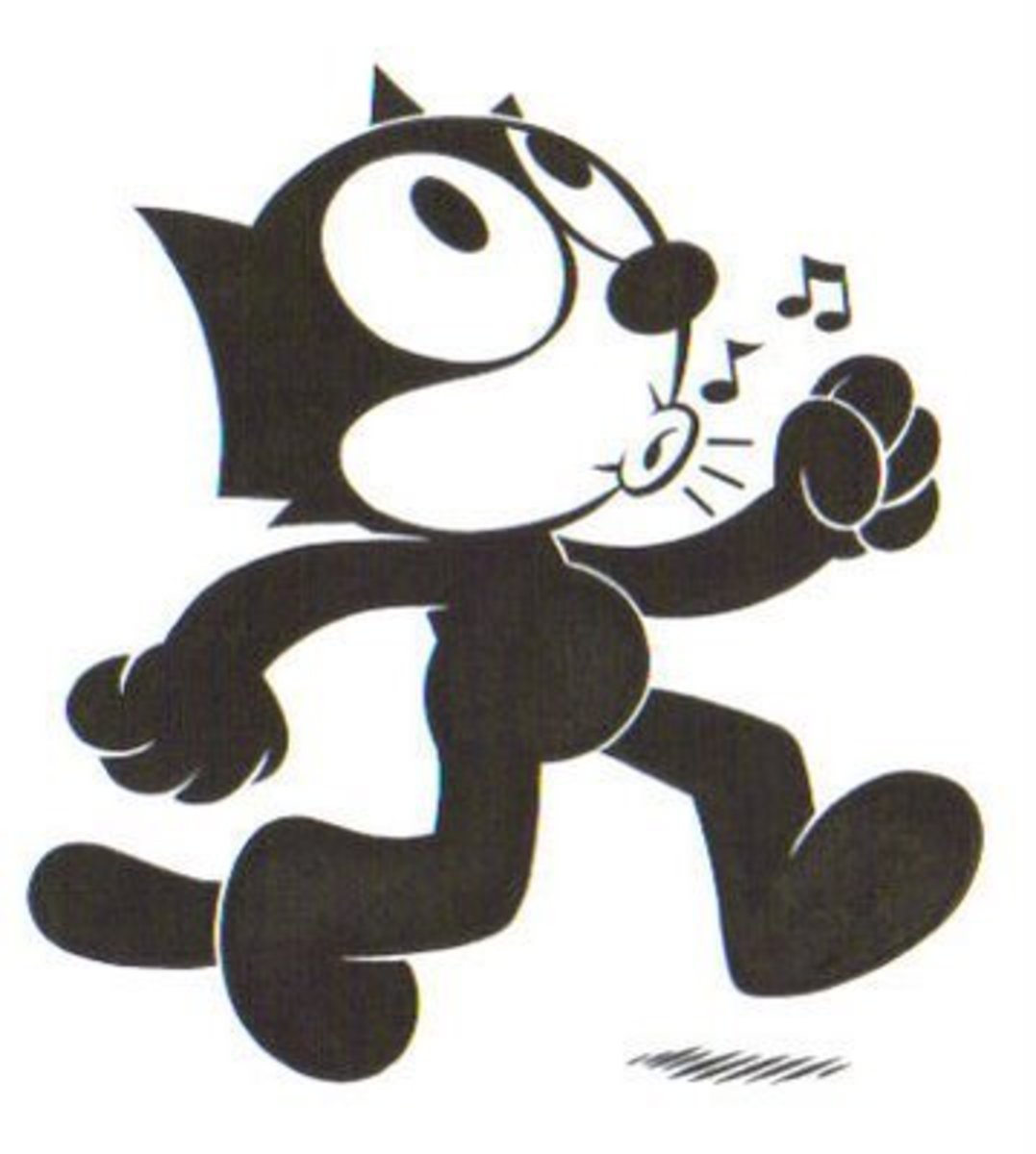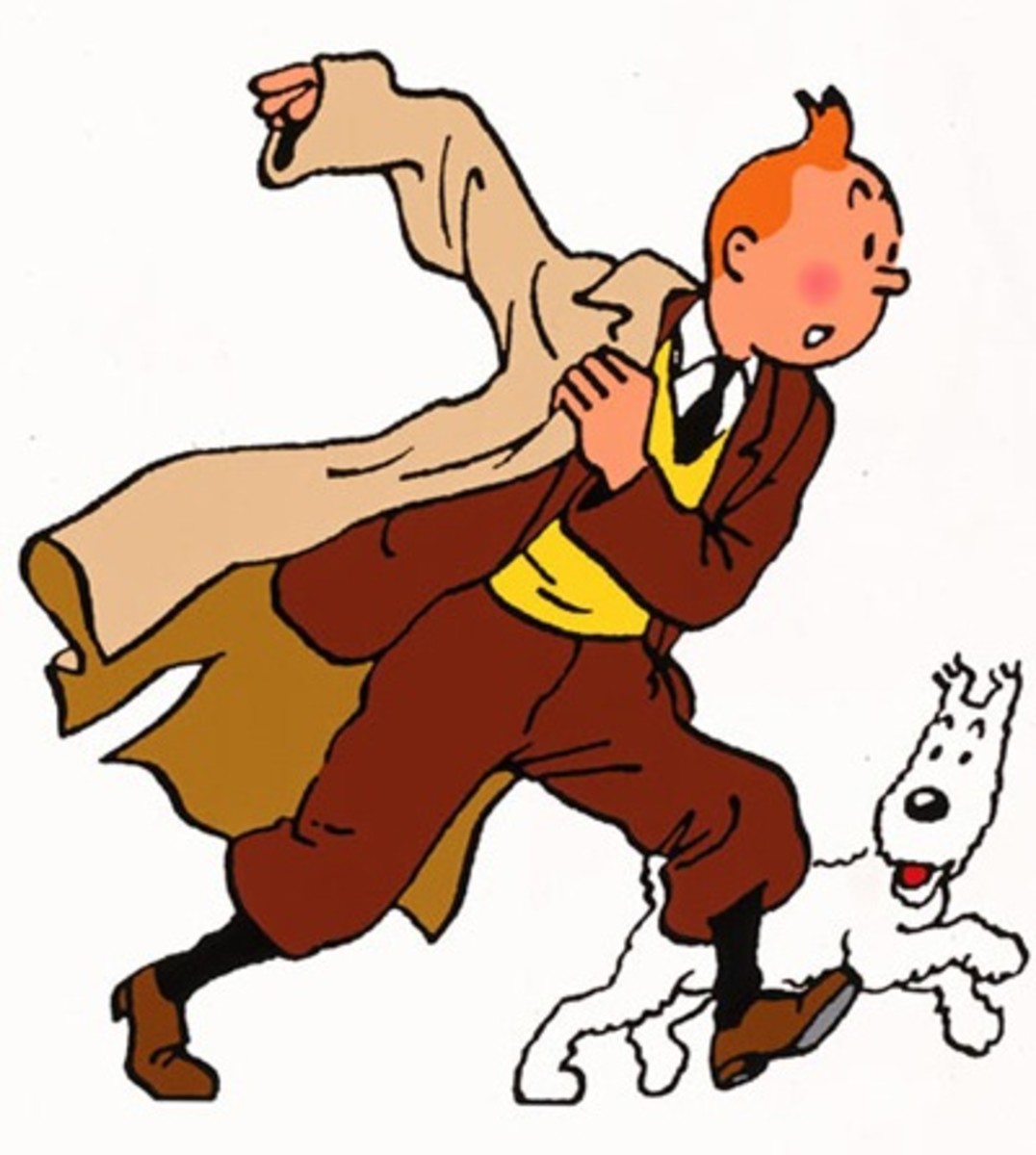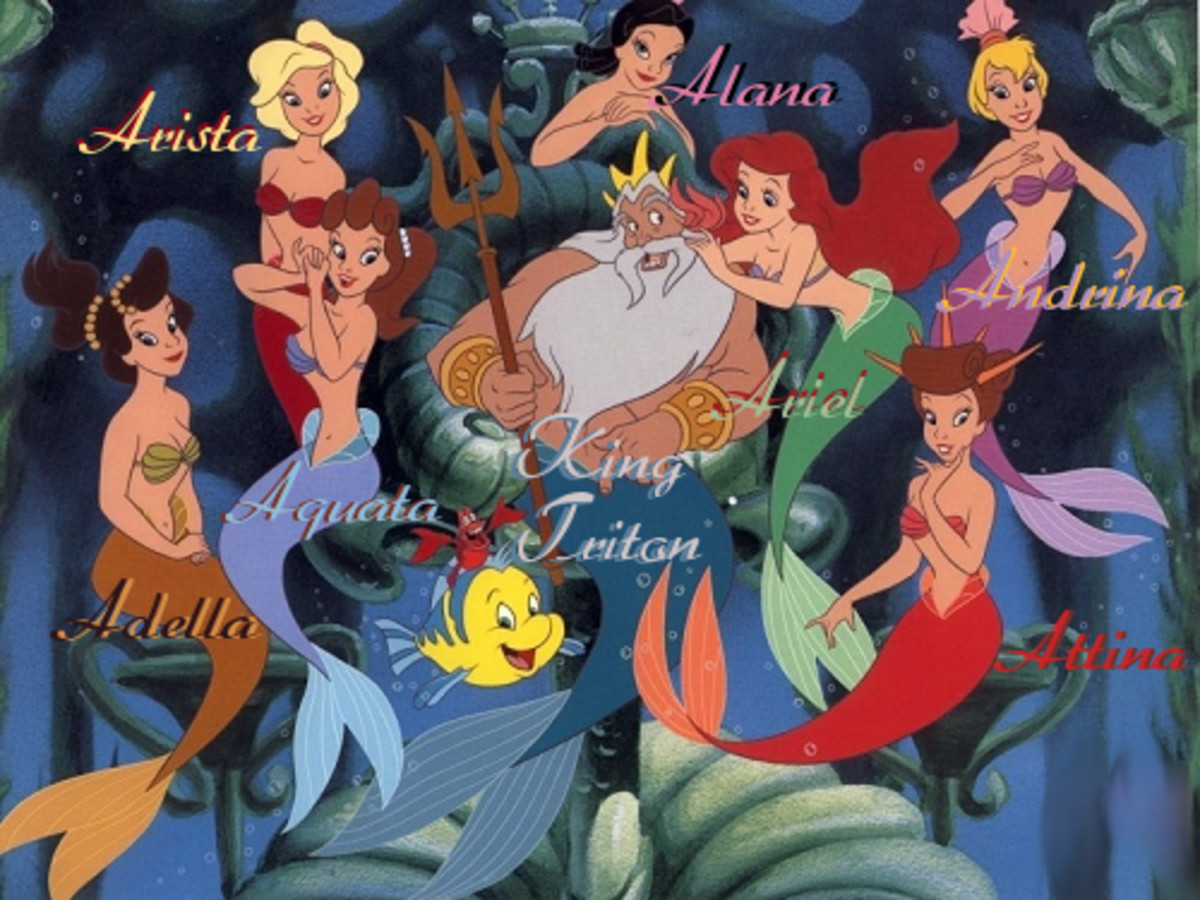PORKY PIG
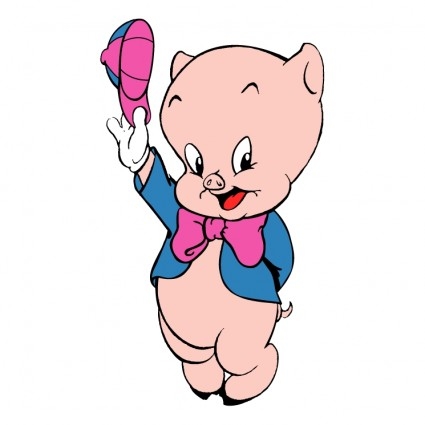
Porky Pig wasn't just Warner Bros.'s first true animated cartoon superstar -- he remains one of the greatest animated cartoon superstars of all time, who helped paved the way for future animated cartoon characters who remain popular today, including two of his Warners cartoon cohorts, Bugs Bunny and Daffy Duck. And if Porky has been seen less in recent decades, partly because his stuttering voice worried real-life stutterers who felt that both the character and Warners were making fun of them, there's little question that Porky was and remains a key character in the evolution of animated cartoons as both an industry and art form.
A scene from I HAVEN'T GOT A HAT (1935) which introduced Porky Pig.
The first four years of Warners' Looney Tunes and Merrie Melodies animated shorts (in 1930-34) spotlighted early animated characters like Bosko, Honey, Foxy, and Buddy -- but by the mid-1930's, the characters disappeared for good, partly because they weren't great characters to begin with, though they would (ironically enough) pave the way for the Warners animated cartoon stars who would become international icons by the end of the 20th Century.
Porky Pig debuted in animation director Friz Freleng's I Haven't Got A Hat (1935), in which he comically stuttered while reciting "The Midnight Ride Of Paul Revere -- several other animated cartoon characters, like Beans the cat, also made their on-screen debuts in the short. But there was no question that Porky outshone his co-stars in that short, thus insuring the character's popularity, especially when he started to headline many of the black-and-white Looney Tunes animated shorts within a year; Joe Dougherty was the voice of Porky during the character's first two years (though Dougherty's actual stuttering would prove be more problematic for the Warners animation studio as the 1930's were about to end).
Several Porky Pig cartoon shorts are notable from a historical perspective -- Gold Diggers Of '49 (1935) was the first Warners animated cartoon directed by Fred "Tex" Avery, who would play a key role in shaping the animation studio's influential brand of comedy. Porky's Poultry Plant (1936), directed by Frank Tashlin, featured the first musical score by composer Carl Stalling, who would contribute to many of the classic Warners cartoon shorts from the late-1930's to the late-1950's. And Porky's Romance (1937), also directed by Tashlin, introduced the character's girlfriend Petunia, whose on-screen appearances were few, but who would be more seen in the comic books featuring Porky and the other Warners animated characters which were published from the 1940's onward by publishers like Dell, Gold Key -- and currently, DC Comics (which, like Warner Bros., is a Time Warner company); that cartoon was the last time that Joe Dougherty would voice Porky.
But it was Tex Avery's Porky's Duck Hunt (1937) which showed what would follow in the decades to come -- the short not only introduced Warners' second great cartoon superstar, Daffy Duck, it was also the first short in which Mel Blanc voiced both Porky and Daffy, insuring the voice actor's popularity to this very day. Porky's Badtime Story (1937) remains notable since it was one of the first Warners animated shorts directed by Bob Clampett, who would play a key role in Porky's further success, as well as that of the Warners animation studio; the short was one of several which featured Gabby Goat, a short-lived character created by longtime Disney animator Ub Iwerks. It was Clampett who would direct some of the most popular Porky Pig cartoons of the late-1930's and early-1940's, with the character acting as an animated straight man/observer placed in surreal settings which, like the rubber-like animation, were and remains part of the shorts' appeal (with Porky In Wackyland [1938] remaining a great example of Clampett's exceptional talent as an animation director) -- even more so when Clampett paired Porky with Daffy Duck in a significant number of them, allowing the latter character to really cut loose as far as his manic personality was concerned.
Porky and Daffy also played key roles in the development of Warners' next cartoon superstar -- animation director Ben Hardaway's Porky's Hare Hunt (1938) introduced a manic rabbit inspired, in part, by Daffy, as Porky tries to hunt him, with comical consequences. Two years later, the prototype rabbit would finally morph into Bugs Bunny, when Tex Avery's A Wild Hare (1940) debuted in movie theaters, setting the character on the path to both stardom and immortality.
One of the best black-and-white Looney Tunes cartoon shorts starring Porky and Daffy from Hollywood's Golden Age remains Friz Freleng's You Ought To Be In Pictures (1940), a skilled and well-executed combination of animation and live action, in which Daffy convinces Porky to leave behind animated shorts and enter feature film work -- while Daffy replaces Porky as Warner Bros.' top cartoon star, which he'd eventually do as the 1940's progressed. Sort of. But then, no one could have predicted that Bugs Bunny would overtake both Porky and Daffy in terms of popularity during the 1940's, with World War II dominating the decade's first half, as the animated shorts starring Bugs (and Daffy) reflected that period.
Which isn't to say that Porky wasn't totally neglected by the Warners animation studio during the war years, as evident by Frank Tashlin's Porky Pig's Feat (1943), in which Porky and Daffy attempt to leave a high-class hotel without paying their bill (and which featured the camera angles that served Tashlin well when he became a successful live-action screenwriter/filmmaker starting in the late-1940's and 1950's -- not to mention a great surprise ending), and Bob Clampett's Corny Concerto (1943), a spoof of Walt Disney's Fantasia (1940), in which Porky shared on-screen time with Bugs Bunny. But by the end of World War II, it seemed like Porky's best years might be behind him.
A scene from Chuck Jones' DUCK DODGERS IN THE 24-1/2 CENTURY (1953):
But animation director Chuck Jones proved that Porky's popularity was far from dimmed, as evident by a number of animated cartoons trilogies from the late-1940's and 1950's, drawing upon the character's straight man persona. One of those trilogies -- a trio of cartoon shorts (Little Orphan Airedale [1947], Awful Orphan [1949], and Often An Orphan [1949]) -- had Porky encounter Charlie Dog, who tried to trick him into becoming his owner. Another trilogy paired Porky with a very-mute Sylvester in various locales in which the former was oblivious to the various dangers that were present (Scaredy Cat [1948], Claws For Alarm [1954], and Jumpin' Jupiter [1955]). But Jones' most popular trilogy which involved Porky was a series of cartoon shorts in which Daffy Duck's attempts to play the hero (with Porky as the smarter-than-thou sidekick) usually ended in disaster for the little black duck; Duck Dodgers In The 24-1/2 Century (1953) remains one of the all-time great Warners animated shorts, not only in terms of story and animation, but also as an inspiration for generations of both animators and live-action filmmakers (and which would inspire several animated sequels decades later, as well as the animated TV series Duck Dodgers [2003-05], in which Porky played a prominent role).
The opening, bumpers, and closing from THE PORKY PIG SHOW (1964):
Porky Pig made few on-screen appearances during the 1960's, as the era of animated theatrical shorts came to the end in the 1960's and 1970's -- Corn On The Cop (1965) was notable for not only being Porky's last on-screen appearance during that decade, but also one of a handful of animated shorts produced for Warners by David H. DePatie and Friz Freleng's animation studio during that decade, roughly two years after the Warners animation studio shut down. (Warners would stop releasing animated shorts on a regular basis in 1969.) By that time, the classic Warners animated shorts were being shown on TV (and later, on VHS, DVD, Blu-ray, and the Internet), entertaining a new generation of audiences -- with a good number of them featured on The Porky Pig Show, which ABC aired in 1964 as part of its Saturday morning schedule. Almost a decade later, Porky and many other Warners cartoon stars would reappear on-screen in the 1972 animated TV special Daffy Duck & Porky Pig Meet The Groovie Goolies, which featured the popular Filmation animated TV characters; the less said about it, the better.
The finale to WHO FRAMED ROGER RABBIT (1988), with Porky Pig saying "That's all, Folks!"
As renewed interest in the classic Warners animated shorts grew in the 1970's and beyond, Porky would appear in not only a significant number of prime-time animated TV specials produced by Warners from the mid-1970's to the early-1990's, but also a number of theatrical feature films, including several animated compilation films released by Warners during the late-1970's and 1980's, and a brief appearance in Who Framed Roger Rabbit? (1988), which would be one of the last times that Mel Blanc would voice the classic Warners cartoon stars before his death in 1989. After Blanc's death, a number of voice actors -- including Bob Bergen -- would voice Porky, not only in such animated TV series like Tiny Toon Adventures (which featured the character's protege Hamton Pig), Duck Dodgers, and The Looney Tunes Show, but also the theatrical feature films Space Jam (1996) and Looney Tunes: Back In Action (2003), as well as various animated shorts that've been shown in movie theaters and on the Internet.
No matter what the future holds for Porky Pig -- his continued popularity's proof that audiences haven't seen the rest of this iconic character. And to paraphrase Porky's famous tag-line at the end of many of the classic Looney Tunes cartoons from Hollywood's Golden Age, that isn't all, folks!
Please visit John Lavernoich's official website: johnlavernoich.weebly.com


